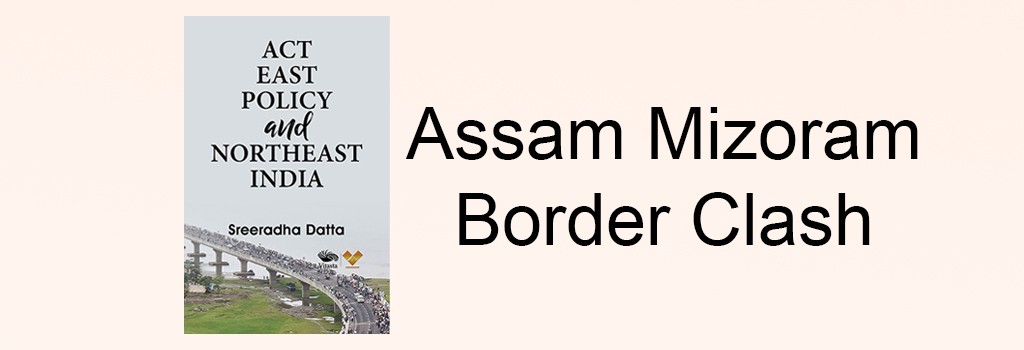Lack of delineation of borders are an inevitable cause for tension for both the sides, often leading to hostility and violent outburst. But when that is within national boundaries the breakout of violence takes on a different meaning and demands immediate attention.
Over the past two weeks there has been palpable build up of tension between Assam and Mizoram with police forces building up their numbers in the border forest area. The ensuing violence that began on July 26, 2021 between police forces and civilians have left many dead and hundreds injured on both sides. This took place in the area of Assam districts of Cachar and Hailakandi bordering Kolasib district in Mizoram, and in Karimganj district bordering Mizoram's Mamit district. The ongoing border dispute that has turned internal border area into extreme hostile zones, witnessing usage of also automatic weapons including light machine guns, dates back to history.
The dispute over the 165-km Assam-Mizoram border has its origin in the British era. Two sets of demarcation attempts dating back to 1875 demarcating Lushai hills which are part of present Mizoram from plains of Cachar in Assam and the 1933 demarcation for separate districts based on linguistic and tribal lines once again separating Lushai Hills, Cachar amongst other areas have continued to fester for long.
The present intractable problem is rooted in differences between Assam and Mizoram wanting to follow the two sets of delineation that took place in the past. Mizoram argues for the 1875 proposal as they claim tribal chiefs were consulted for this process which they were not during the 1933 regulation, that Assam would rather apply. Subsequently, Mizoram was carved out of Assam in 1972, first as a Union Territory and then it became a state in 1987. This outstanding issue about where exactly the demarcating line falls over the boundary area was never resolved with each claiming the other had taken its land away. The latest round of violence has been unprecedented but this unresolved border issue has time to time led to sporadic incidents with claims and counter claims from both sides.
While both sides have suffered losses that there is no further occasion for such violence needs to be a priority for both the state governments. No boundary solutions can take place under such heightened conditions. The situation has to be made calm before dialogue is initiated to not only ensure enabling conditions for both to negotiate for a workable resolution acceptable to both. While neither Assam nor Mizoram is in any mood to give up any of the disputed area, for the time being a negotiated settlement where both sides continue to have equal access with a modus vivendi in place can be a way out for ensuring that Indians are not killing each other for a problem that their forefathers had left behind before a full comprehensive demarcation can be worked out. None of that is possible without a political will that wants to ensure peace and a sustainable solution.
* Centre Head, Neighbourhood Studies and Senior Fellow,
Vivekananda International Foundation and
Non-Resident Senior Fellow, ISAS-NUS. Singapore
by Sreeradha Datta







